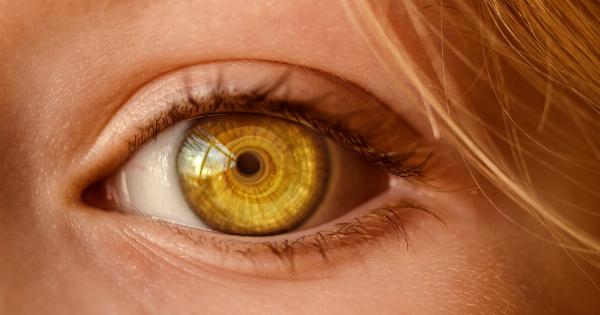Orgasm is often considered to be one of the most pleasurable experiences a person can have. While male orgasm has been extensively studied, the science of female orgasm remains a relatively understudied and enigmatic subject.
However, research in recent years has shed some light on the mechanisms and functions of female orgasm. Here’s what we currently know about the science of female orgasm.
The Clitoris: The Key to Female Orgasm
The clitoris is a small, highly sensitive organ located at the top of the vulva. It is considered to be the primary source of sexual pleasure in women and plays a crucial role in orgasm.
The clitoris contains thousands of nerve endings, making it incredibly sensitive to touch and stimulation.
During sexual arousal, the clitoris becomes engorged with blood, leading to increased sensitivity and pleasure. Stimulation of the clitoris can result in a buildup of sexual tension and ultimately lead to orgasm.
While clitoral orgasm is most commonly achieved through direct stimulation, some women may also experience orgasm through other forms of sexual activity, such as vaginal or nipple stimulation.
The Orgasmic Response: A Complex Neurological Process
The female orgasm involves a complex interplay of neurological, physiological, and psychological processes. When sexual stimulation occurs, various parts of the brain, including the amygdala, hypothalamus, and prefrontal cortex, are activated.
These regions of the brain are responsible for processing pleasure, emotions, and sexual response.
As sexual arousal increases, the body experiences physiological changes, such as increased heart rate, respiration, and blood flow to the genital area.
These changes prepare the body for orgasm and contribute to the intense sensations experienced during climax.
The Role of Hormones in Female Orgasm
Hormones, such as oxytocin and dopamine, also play a significant role in female orgasm. Oxytocin, often called the “love hormone,” is released during sexual activity and promotes bonding and feelings of intimacy.
It is believed to contribute to the pleasurable sensations experienced during orgasm.
Dopamine, a neurotransmitter associated with pleasure and reward, is also released during sexual arousal. It enhances feelings of pleasure and reinforces the association between sexual activity and positive emotions.
Dopamine is involved in the brain’s reward system, which reinforces behaviors that are essential for survival, such as sexual activity and reproduction.
Evolutionary Perspectives on Female Orgasm
From an evolutionary standpoint, the purpose of the female orgasm has been a subject of debate. Unlike male orgasm, female orgasm does not appear to be necessary for reproduction since it doesn’t directly contribute to fertilization.
This has led scientists to propose various theories to explain its existence.
One theory suggests that female orgasm may have evolved as a mechanism to promote pair bonding between sexual partners.
The release of bonding hormones, such as oxytocin, during orgasm may strengthen emotional connections and promote long-term relationships.
Another theory proposes that the stimulation of the female orgasm may help with sperm retention.
The rhythmic contractions of the uterus and cervix during orgasm could aid in drawing sperm into the reproductive tract, increasing the chances of fertilization.
The Elusive Female Orgasm Gap
Despite the increasing understanding of the science of female orgasm, there still exists a significant orgasm gap between men and women.
Research consistently shows that men are more likely to experience orgasm during sexual encounters compared to women.
Several factors contribute to this disparity, including cultural and societal influences, lack of sexual education, and the perpetuation of gender stereotypes.
Women may face challenges in communicating their sexual desires and needs, which can hinder their ability to achieve orgasm.
Addressing the orgasm gap requires a multifaceted approach, including open communication, comprehensive sex education, and dismantling societal barriers that perpetuate inequality in sexual experiences.
The Influence of Psychological Factors
Psychological factors also play a significant role in female orgasm. For many women, the ability to fully relax and let go of inhibitions is essential for experiencing orgasm.
Stress, anxiety, body image issues, and relationship dynamics can all impact a woman’s ability to reach climax.
Creating a safe and non-judgmental environment that prioritizes emotional intimacy and explores sexual desires is crucial in fostering a woman’s sexual well-being and orgasmic experiences.
Variability in Female Orgasm
It’s important to note that the experience of female orgasm can vary greatly between individuals. Some women may experience multiple orgasms, while others may have difficulty achieving orgasm altogether.
Factors such as age, overall health, medications, and hormonal changes can also influence the frequency and intensity of orgasms.
It’s essential to remember that there is no “normal” or “ideal” way to experience orgasm. Each person’s sexual journey is unique, and the focus should be on exploring pleasure and cultivating sexual satisfaction.
Conclusion
While the science of female orgasm still holds many mysteries, recent research has provided valuable insights into the mechanisms and functions of this pleasurable experience.
Understanding the role of the clitoris, the complex neurological processes, the influence of hormones, and the impact of psychological factors can all contribute to enhancing women’s sexual well-being. By continuing to study and explore the science of female orgasm, we can further address the orgasm gap and promote a more inclusive and fulfilling sexual experience for everyone.





























